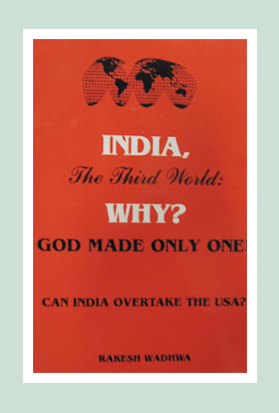How Far is India from a Free Market?
The year 1947 saw India in new light, and a free India was born. But this new India faced a serious challenge of stabilising its economy. The nation had just taken a beating from the Second World War, and was left to deal with the repercussions of the Indo-Pakistan partition. The economic turmoil left the new government headed by Pandit Jawaharlal Nehru, to deal with poverty, health hazards, illiteracy and many other social and economic problems.

A Socialistic and Nationalised Economy
Following the crisis, the Indian economy saw a shift to a socialistic system. In the 1950s, nationalisation began with mining, electricity generation, steel, water, machine tools, insurance, telecommunications and other industries falling into the nationalised category. The banking sector followed suit in 1969.
With the introduction in the Industries Act of 1951 and the birth of the “Licence Raj,” the country faced stagnation. Innovation was subdued and domestic production was curtailed. The onslaught of high tariffs and taxes hit the economy badly and foreign investments dried up under the stringent restrictions. Although this was done in a purview of encouraging self-sufficiency and supporting small scale and domestic production, economic growth was not strong enough to sustain the country.
In the period from 1950 to 1973, India’s annual growth rate was only 3.7%, translating to a per capita of 1.6%, while the Japanese economy boomed at a pace almost 10 times faster and the Chinese economy was able to sustain a growth rate of 8%.
The Change to Capitalism
India’s economy began to shift towards capitalism in 1991. However, this shift from socialism was not voluntary. When the economy started to sink in 1973, there were severe budgets deficits and balance of payment problems, which led to an extreme foreign-exchange crisis. This tipped the country to a point where it could not even finance three weeks’ worth imports.
The crisis saw a new government sworn in; and under the prime ministerial leadership of PV Narasimha Rao, who roped in Manmohan Singh as the finance minister, hope was reborn. Together, they opened the doors for globalisation, liberalisation, privatisation (LPG) and foreign investment. The new era saw the economy booming, with information technology at the forefront. With inflation in check, Indian companies were finally given the freedom to borrow funds from foreign capital markets. The literacy rate in the country soared in the subsequent years and sowed the seeds for private entrepreneurship. Telecommunications became privatised, along with the airlines, during this decade.
The Move towards a Free Market
When we look back, historically, India is one of those countries that have had a better free market orientation than others. Post crisis, India has seen a steep increase in the GDP, with the annual rate finally reaching 8%.
Foreign Institutional Investors are now pumping billions of dollars, sustaining FDIs at a constant high. Although this does paint a rosy picture of the country’s economy, India’s journey towards a free market is still unfinished.
The bureaucracy, post-liberalisation, failed to stay with the changing times, and the current structure has led to the creation of several bottlenecks, which continue to remain sealed. One case in point is poverty. It is important to understand that the effect of the LPG system has given millions of people below the poverty line a hope for a better future. But post-liberalisation, the gross inequalities have started widening rather that moving closer. As one part of India develops at a rapid rate, the other part of the economy continues to be impoverished. The key isn’t reverting to the old ways, buy to reform the existing mechanics of the bureaucracy.
Free market economy has allowed city life to touch rural India, although that is not enough. Rural India also needs to be technically educated and qualified to be able to contribute towards sustainable development, which is where India is lacking today.
So, to answer the primary question: Yes, India is definitely moving towards a free market economy. However, the goal is still miles away, reaching which would translate what the country must achieve in order to become a developed and sustainable economy.
 Rakesh Wadhwa. Ever since, I was a school boy, I knew India was on the wrong path. Socialism was just not what we needed to get ahead. Government controlled our travel; government controlled our ability to buy and sell; and government controlled our freedom to move our money. My life has focused on the inherent rights people have. When I was in college, I never understood, what the governments meant by their "socialistic attitude". If people are free to buy, sell and move their capital themselves without any restrictions by state, then the welfare of people is inevitable & hence the countries they live in will become wealthy. The government has no right whatsoever, to point a finger at me or my business. I am not a revolutionary. I just want to light up my cigarette and not get nagged about it. I believe in non-interfering attitude to attain more.
Rakesh Wadhwa. Ever since, I was a school boy, I knew India was on the wrong path. Socialism was just not what we needed to get ahead. Government controlled our travel; government controlled our ability to buy and sell; and government controlled our freedom to move our money. My life has focused on the inherent rights people have. When I was in college, I never understood, what the governments meant by their "socialistic attitude". If people are free to buy, sell and move their capital themselves without any restrictions by state, then the welfare of people is inevitable & hence the countries they live in will become wealthy. The government has no right whatsoever, to point a finger at me or my business. I am not a revolutionary. I just want to light up my cigarette and not get nagged about it. I believe in non-interfering attitude to attain more. 
 The Bastiat Award is a journalism award, given annually by the International Policy Network, London. Bastiat Prize entries are judged on intellectual content, the persuasiveness of the language used and the type of publication in which they appear. Rakesh Wadhwa won the 3rd prize (a cash award of $1,000 and a candlestick), in 2006.
The Bastiat Award is a journalism award, given annually by the International Policy Network, London. Bastiat Prize entries are judged on intellectual content, the persuasiveness of the language used and the type of publication in which they appear. Rakesh Wadhwa won the 3rd prize (a cash award of $1,000 and a candlestick), in 2006.
What the readers are saying…